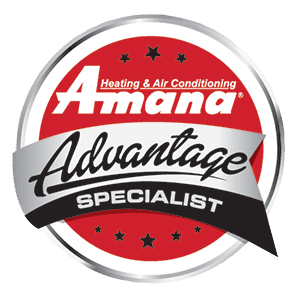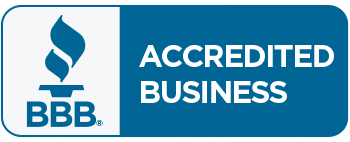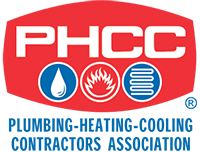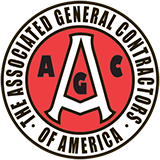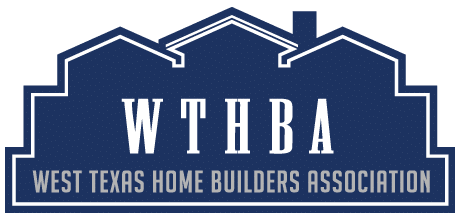
When you step inside your cubical in your workplace, or a grocery store, or a doctor’s office, the last thing you probably think of is the air quality inside the space. Rather, you are focused on the purpose of the commercial space you enter. Yet as much as the indoor air quality (IAQ) in commercial spaces is overlooked, its impact on businesses can be profound. From reduced employee productivity to increased maintenance costs and legal liabilities, the hidden costs of poor IAQ can significantly affect an organization’s bottom line.
In this article, we’ll explore how poor IAQ manifests in commercial environments, its financial and health consequences, and how businesses can proactively address these issues to foster a healthier and more profitable work environment.
Understanding Indoor Air Quality in Commercial Spaces
IAQ refers to the cleanliness and composition of the air within a building. It encompasses factors like temperature, humidity, ventilation, and the presence of pollutants such as dust, mold, volatile organic compounds (VOCs), and airborne pathogens. Air quality is not something visible to the human eye, so it requires conscious awareness to ensure it is taken care of.
Key Contributors to Poor IAQ in Commercial Spaces
- Inadequate Ventilation: Insufficient air circulation leads to the buildup of carbon dioxide, odors, and pollutants.
- HVAC System Issues: Poorly maintained HVAC systems can harbor mold, bacteria, and other contaminants.
- Chemical Pollutants: Cleaning supplies, paints, and office equipment emit VOCs that degrade air quality.
- Occupant Density: High occupancy increases carbon dioxide levels and the spread of airborne illnesses.
While these issues may seem minor, their cumulative effect can be detrimental to businesses. Though these are contributing factors, they can be addressed together through a variety of methods we will discuss later in the article. Taking care of IAQ is not an overwhelming task, though there are so many contributing factors to poor air quality.
The Hidden Costs of Poor IAQ
- Reduced Employee Productivity and Performance
Employees spend an average of 8-10 hours a day in commercial spaces. Spending so long in one place means the environment will have a strong impact on them. If the workplace is hazardous, the workers will certainly experience adverse health effects as a result. Poor IAQ can lead to symptoms such as headaches, fatigue, and difficulty concentrating, collectively known as “sick building syndrome.” This can lead to symptoms including decreased productivity. Studies have shown that poor air quality can reduce cognitive function and decision-making ability by up to 50%. Additionally, our research has found that poor IAQ is linked to increased absenteeism. Employees are more likely to take sick leave due to respiratory illnesses or allergies triggered by poor IAQ. A study by Harvard University’s T.H. Chan School of Public Health found that improving IAQ in workplaces can boost employee productivity by as much as 11%.
- Health-Related Costs
Prolonged exposure to pollutants in commercial spaces can have severe health consequences, including respiratory issues, chronic diseases, and even mental health impacts. Asthma, bronchitis, and other respiratory conditions are exacerbated by the allergens and irritants that are a strong factor in poor IAQ. Long-term exposure to VOCs and fine particulate matter (PM2.5) increases the risk of heart disease and cancer. This will certainly be felt by the employees that spend long shifts in the poor IAQ. Newer awareness of mental health has also found that poor air quality has been linked to stress, anxiety, and depression. In employees, feeling as though you spend all your time breathing recycled, stale air would make anyone restless and unhappy.
The healthcare costs associated with treating these conditions often indirectly fall on employers through increased insurance premiums and lost productivity.
- Increased Maintenance and Operational Costs
Neglecting IAQ can lead to higher maintenance expenses. Dust and debris clog filters and ducts, increasing the strain on your HVAC system. This will increase the energy expenses and reduce the efficiency of the machine. Building repairs are another increased cost when IAQ is poor. Mold growth caused by humidity issues can damage walls, ceilings, and flooring, requiring costly remediation.
Energy Star estimates that improving IAQ through efficient ventilation can reduce HVAC-related energy costs by up to 20%.
- Legal and Compliance Risks
Businesses are required to comply with indoor air quality standards set by organizations such as OSHA (Occupational Safety and Health Administration) and ASHRAE (American Society of Heating, Refrigerating, and Air-Conditioning Engineers). When compliance is not met, employees can legally hold their employers responsible. Poor IAQ leading to health issues may result in workers’ compensation claims or lawsuits. Non-compliance with air quality standards can attract penalties and damage a company’s reputation. Proactively addressing IAQ can help mitigate these risks while demonstrating a commitment to employee well-being.
- Customer and Tenant Dissatisfaction
For businesses in retail, hospitality, or commercial real estate, poor IAQ can drive away customers and tenants. Customers may leave prematurely or provide negative reviews if they perceive odors or discomfort. Employees might not notice the quality of the air if they breathe it every day, but customers are likely to be more sensitive.
Vacancy rates can also increase in leased spaces like office buildings. Tenants may choose not to renew contracts due to IAQ concerns.
Maintaining high IAQ can enhance customer experience and tenant retention, directly impacting revenue.
How to Improve IAQ in Commercial Spaces
Improving IAQ is a multi-faceted process that requires both short-term actions and long-term strategies.
- Regular HVAC Maintenance
Be sure to regularly replace air filters to prevent the buildup of dust and allergens. Clean and inspect ductwork to ensure optimal airflow and prevent mold growth. Another solution is to upgrade to a high-efficiency particulate air (HEPA) filters for better pollutant removal. Additionally, installing a UV light into the HVAC system has been proven to keep air pure (see our blog about UV lights here). Air purifiers equipped with UV-C light or activated carbon filters can eliminate bacteria, viruses, and chemical pollutants.
- Monitor IAQ with Smart Sensors
IoT-enabled sensors can provide real-time data on air quality parameters such as CO2 levels, humidity, and PM2.5. Alerts allow for immediate corrective actions.
- Control Humidity Levels
Maintain indoor humidity between 30% and 50% to prevent mold growth and reduce the spread of airborne pathogens.
- Limit Chemical Pollutants
As mentioned in the beginning of this article, one of the main factors contributing to poor IAQ are chemicals commonly used in cleaning commercial spaces. Use low-VOC paints, adhesives, and cleaning products. Store chemicals in well-ventilated areas away from high-traffic zones.
- Increase Ventilation
Though it is often forgotten about in office buildings, letting in fresh air does wonders for IAQ and improves productivity. Open windows or use mechanical ventilation systems to increase the exchange of indoor and outdoor air. Implement energy recovery ventilators (ERVs) to balance fresh air intake with energy efficiency.
- Educate Occupants
Encourage employees, tenants, or customers to take part in maintaining IAQ, such as reporting issues or adhering to policies on smoking or chemical use.
The ROI of Better IAQ
While improving IAQ may involve upfront costs, the long-term benefits far outweigh the investment:
- Higher Employee Productivity
A healthier workforce is a more productive workforce. Improved IAQ translates to better cognitive function, fewer sick days, and higher morale.
- Lower Operational Costs
Efficient HVAC systems and reduced energy usage result in significant savings over time.
- Enhanced Reputation
Businesses that prioritize IAQ are seen as socially responsible and forward-thinking, which can attract top talent and loyal customers.
- Compliance and Risk Mitigation
By meeting or exceeding IAQ standards, businesses avoid fines, lawsuits, and reputational damage.
Case Studies: IAQ Success Stories
A Dallas Office Building Increases Employee Productivity
Challenge:
An office building in downtown Dallas struggled with complaints of stale air, odors, and employee fatigue. The building’s ventilation system was outdated, and VOCs from office materials like carpets and furniture were contributing to poor IAQ.
Solution:
- Upgraded the HVAC system to include advanced air filtration and increased outdoor air exchange rates.
- Installed smart IAQ monitoring devices to track real-time air quality metrics.
- Transitioned to low-VOC office materials and eco-friendly cleaning supplies.
Outcome:
- A 12% increase in employee productivity as measured by project completion times.
- Higher tenant satisfaction rates, with lease renewals rising by 25%.
- The building received WELL certification for creating a healthier indoor environment
Conclusion
Poor indoor air quality in commercial spaces is a silent but costly issue that impacts health, productivity, and profitability. By understanding the hidden costs of poor IAQ and taking proactive measures, businesses can create safer, more comfortable environments for employees, customers, and tenants.
Investing in high-quality air management systems, regular maintenance, and employee education is not just a regulatory obligation, it’s a strategic decision that yields measurable returns in productivity, cost savings, and customer loyalty. At BTAC, we are here to help with any IAQ concerns that you might have. With our skilled team of professionals, we offer 24-hour assistance with your air conditioning or HVAC systems. Let us help you improve your commercial air quality today! Call now!
The future of commercial success is in the air you breathe. Make it a priority.

